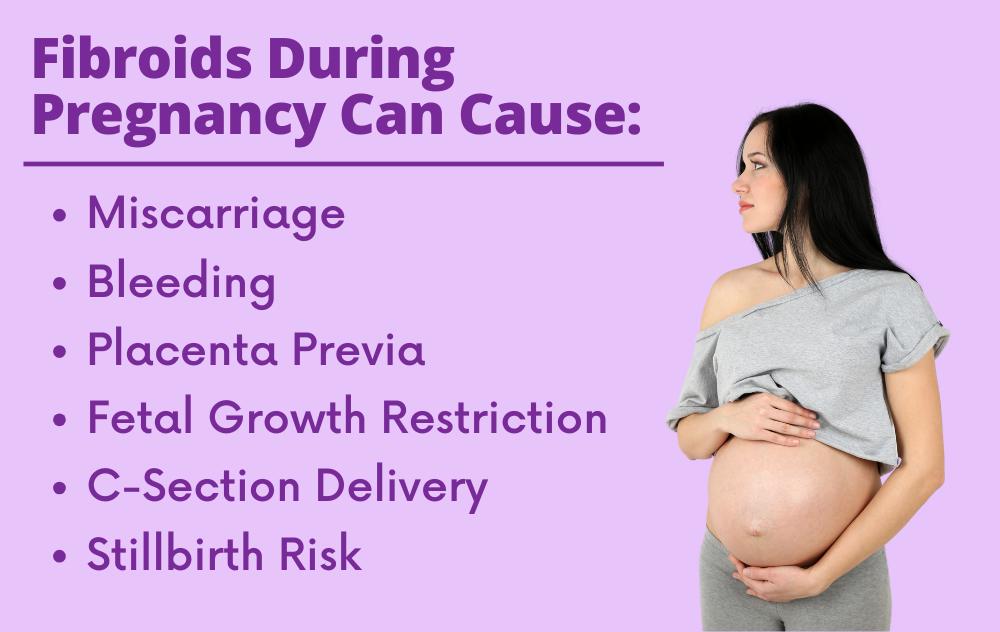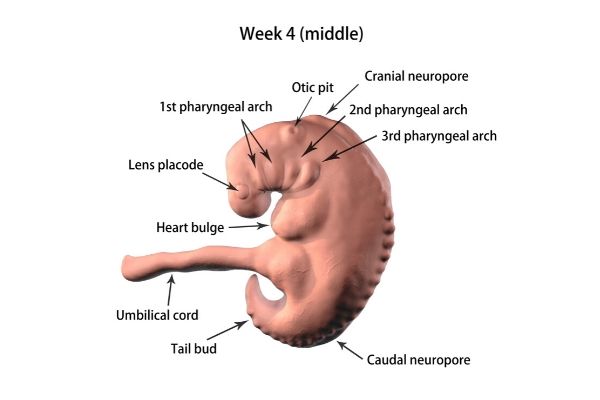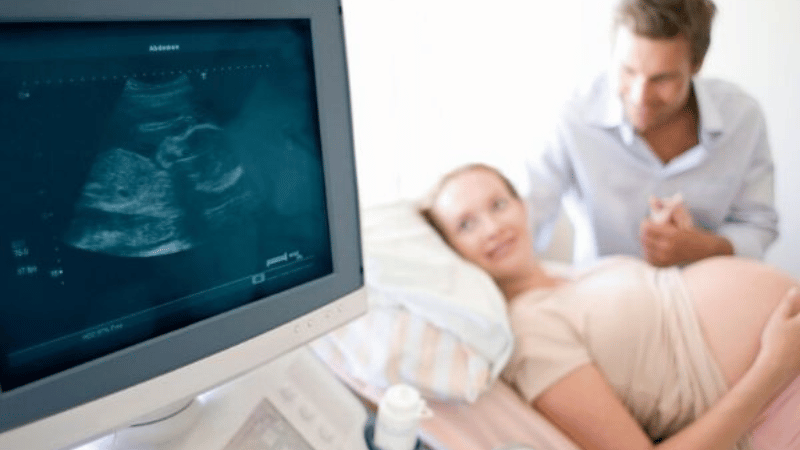
How Do Fibroids Affect Each Trimester of Pregnancy?
Uterine fibroids are noncancerous tumors that commonly develop in the uterus during the childbearing age. A fibroid diagnosis can raise concerns about pregnancy complications for women planning to have children. While many women with fibroids experience healthy pregnancies, it’s important to understand the potential complications.
Managing fibroids before pregnancy can optimize your chances of a healthy pregnancy. While various effective fibroid treatments are available, they are generally reserved for before or after pregnancy.
If you are planning a family and have concerns about fibroids, schedule a consultation with one of our fibroid experts at USA Fibroid Centers. Our team can help you receive a diagnosis and choose the right treatment plan.
Why Size Matters: Fibroids and Pregnancy Trimesters
Fibroids can affect a woman’s pregnancy in other ways besides the trimester. The pregnancy complications women may face vary based on the size, location, and type of fibroids.
Watch our video with Shay Johnson on fibroid size:
Size: Fibroids can vary in size, starting at less than one centimeter. A large fibroid can be 10 centimeters or more, from the size of a grapefruit to a watermelon. Larger fibroids take up more space and require a larger blood supply, putting more pressure and stress on the mother and the developing fetus.
Location: Where a fibroid is located in the uterus can also impact pregnancy.
Type: Different types of fibroids pose different risks during pregnancy:
- Submucosal fibroids: Grows within the uterine cavity and may increase the risk of infertility or growth of the fetus. They also pose a higher risk of miscarriages Since they can develop individually or in clusters, varying in size and location, submucosal fibroids pose a higher risk of miscarriage and can cause heavy menstrual bleeding. These growths expand within the uterine cavity, changing its form and causing heavy bleeding.
- Intramural fibroids: Found within the uterine wall, these can distort the shape of the uterus and potentially impact fetal growth or position.
- Subserosal fibroids: Located on the outside of the uterus, these typically cause fewer pregnancy complications unless they become very large and put pressure on surrounding organs.
Fibroid growth rates can change between the different pregnancy trimesters, altering their impacts on health. Fibroid symptoms can cause anything from pain during pregnancy to preterm labor.
Treating fibroids before conception can help to avoid fibroid symptoms during the different stages of pregnancy.
Fibroids in the First Trimester
Fibroids are more likely to grow during the first trimester. One study found that about 71.4% of fibroids grew throughout the first and second trimesters, while 66.6% grew during the second and third trimesters.¹ Obstetricians can use ultrasound to monitor the size and growth rate of fibroids.
One of the more common complications of uterine fibroids in pregnancy during the first trimester is pain. This pain may occur in the pelvis, abdomen, lower back, hip, or down the leg. Cramps during the first trimester can be mistaken for a miscarriage, especially if accompanied by heavy bleeding.
Can Fibroids Cause Bleeding in the First Trimester?
Although spotting during early pregnancy is common and often harmless, any bleeding can be emotionally worrying. During the first trimester though, implantation bleeding is common. Implantation bleeding is when the fertilized egg attaches itself to the uterine lining, typically around 6-12 days following conception. It is usually light, with traces of dark red, red, or pink blood.
If you have fibroids and are bleeding during any trimester of pregnancy, contact your doctor immediately.
Fibroids in the Second Trimester
Although issues during the first trimester are more likely, fibroids still present potential complications in pregnancy during the second trimester. These complications can include:
- Preterm Labor: Birth contractions starting before 37 weeks gestation are considered preterm labor, which can lead to symptoms like changes in vaginal discharge, pelvic pressure, and even your water breaking.
- Fetal Growth Restriction: A common result of large fibroids, and occurs when a fetus doesn’t grow at a normal rate within the womb, causing issues such as a low birth weight, decreased oxygen levels, and more.
- Fibroid Pain During the Pregnancy Trimesters: Pain is the most common symptom during all three trimesters. Large fibroids over five centimeters in size often lead to pain during the later trimesters.
Although rare, the degeneration of fibroids during pregnancy can cause severe pain, as a thyroid stalk (pedunculated fibroid) becomes twisted, and the tumor’s blood supply is cut off. Degeneration can cause symptoms such as acute pain, fever, and abdominal tenderness.
Placental Abruption
Another complication that pregnant women with fibroids may experience is placental abruption. This condition occurs when the placenta partially or completely separates from the uterus before childbirth, putting the mother and baby at risk. Data suggests that women with fibroids are three times more likely to experience placental abruption than women without fibroids.²
Symptoms of placental abruption include:
- Vaginal bleeding
- Severe abdominal pain
- Sudden and intense back pain
- Uterine tenderness
- Frequent contractions
If you are experiencing any of these symptoms, especially severe or sudden pain and significant vaginal bleeding, you should seek emergency care as soon as possible.
Do Fibroids Shrink or Grow in the Second Trimester?
Some women with uterine fibroids experience fibroid growth during pregnancy, while others may not see any change in fibroid size. Since fibroids rely on estrogen to grow, the increased production during pregnancy can cause some women to experience accelerated fibroid growth. Learn about some of the challenges during pregnancy with fibroids.
Can Fibroids Cause Miscarriage in the Second Trimester?
The risk for miscarriage is higher in early pregnancy for women with fibroids.² The size of the fibroid may not have a significant impact on the increased risk of miscarriage. However, the number of fibroids can affect the chances of miscarriage.³
Fibroids in the Third Trimester
In addition to pain, fibroids in the third trimester can cause complications towards the end of pregnancy and delivery. Studies indicate that the rate of delivery by C-section is up to six times greater for women with fibroids.4
This increased likelihood occurs because fibroids can prevent the uterus from contracting properly. If fibroids grow large enough, they can block the birth canal, making vaginal labor more difficult and increasing the chance of the baby being in a breech position. Fibroids can sometimes grow large enough to limit the space for the baby in the uterus so that they can’t turn to the correct position, causing the baby’s buttocks or feet to come out of the vagina first.
Fibroids and Postpartum
Even after making it through all of the pregnancy trimesters with fibroids, there is still an increased risk of complications after delivery. Women with fibroids are significantly more likely to experience certain complications after pregnancy, including postpartum hemorrhage, which is when there is more bleeding than usual after delivery.
The body needs to physically and hormonally readjust after delivery, and fibroids can affect the first menstrual cycle. Fibroids often shrink after delivery, but this is not always the case. If you continue to suffer from fibroid symptoms after giving birth, it’s important to alert a fibroid specialist.
Talk With A Fibroid Specialists About Your Concerns
Treating Fibroids Before Pregnancy
Uterine fibroids are most common during the reproductive years, and many of our patients are concerned about preserving fertility.
Fibroids can increase the risk of pregnancy complications, such as miscarriage, preterm birth, and abnormal fetal positioning. For this reason, managing fibroids before conception is often recommended. While fibroids may also interfere with conception, it’s important to note that not all women with fibroids experience fertility challenges.
Hysterectomy, the surgical removal of the uterus, is a treatment option for fibroids but is not suitable for women desiring future pregnancies. Myomectomy, a surgical procedure to remove fibroids while preserving the uterus, is an alternative.
However, it carries risks of scarring, infection, and potential recurrence of fibroids. Uterine fibroid embolization (UFE) is a non-surgical procedure that blocks the blood supply to fibroids, causing them to shrink, and is preferred by women who wish to preserve their uterus and avoid the risks associated with surgery.
Due to the complications that can happen with uterine fibroids during pregnancy, it’s prudent to explore fibroids before conceiving. This can also make it easier to become pregnant since fibroids can impact conception.
It’s crucial to discuss treatment options with a healthcare provider to determine the best course of action based on individual circumstances, including desired family size and the severity of fibroid symptoms.
TALK TO A FIBROID SPECIALIST NOW
Uterine Fibroid Embolization
At USA Fibroid Centers, our experts offer an effective, non-surgical treatment called uterine fibroid embolization (UFE) that can preserve the uterus and retain fertility.
UFE is an outpatient procedure with little recovery time, so if you suffer from symptomatic fibroids and have not been able to conceive, we suggest consulting your doctor about UFE. Conceiving may become easier if fibroids are properly treated.
Waiting to seek treatment for fibroids after becoming pregnant limits safe treatment options until the baby is born. Due to the risk to the baby, doctors will generally only prescribe bed rest, mild pain relievers, and hydration to deal with the symptoms.
Schedule Fibroid Treatment with USA Fibroid Centers
If you have concerns about how fibroids affect pregnancy trimesters, discuss them with your doctor or one of our fibroid specialists. Understanding the potential complications when fibroids are involved is critical.
If you are experiencing painful fibroids symptoms and are considering getting pregnant, we encourage you to call us at 855.615.2555 or go online to schedule a consultation with one of our leading experts.
Sources:
- Xiaoxiao Catherine Guo and James H Segars, “The impact and management of fibroids for fertility: An evidence-based approach,” Obstetrics and Gynecology Clinics of North America 39 no. 4 (2012): 521-533.
- Hee Joong Lee, Errol R Norwitz, and Julia Shaw, “Contemporary management of fibroids in pregnancy,” Reviews in Obstetrics & Gynecology 3 no. 1 (2010): 20-27.
- Lee, Norwitz, and Shaw, “Contemporary management of fibroids in pregnancy.”
- “Uterine fibroids,” Office on Women’s Health at the United States Department of Health and Human Services, last modified February 19, 2021.






